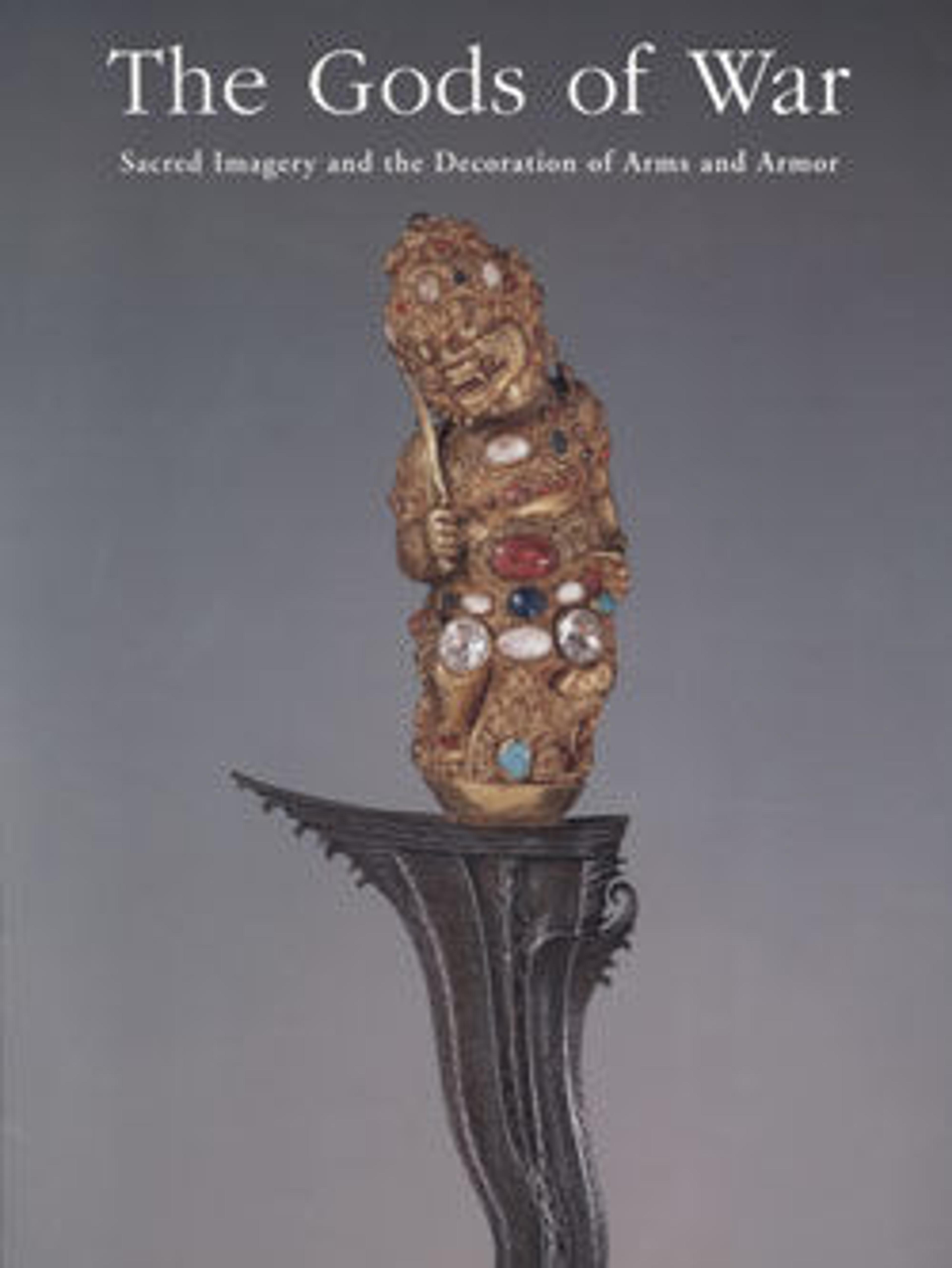Quoit (Chakra)
The chakra, meaning both wheel and discus in Sanskrit, is a weapon form of great antiquity. Its use is recorded in the Rigveda, a religious text written in India between 1200 and 800 B.C. In the hands of celestial warriors it also figures prominently in both the Rāmāyana and the Māhābharata. The chakra became the familiar weapon and symbolic attribute of several Hindu gods, chief among them Vishnu, and was later itself personified as a minor deity. In a more earthly context, this weapon was used sporadically throughout central and northern India for many centuries. It is most closely associated, however, with the Punjab region and in particular with the Sikhs, by whom it is referred to as a chakar.
A flat steel ring with a sharp outer edge, the chakar is designed to be thrown with a spinning motion. According to accounts by foreign visitors and soldiers traveling in Sikh territories in the nineteenth century, the chakar was effective at distances as great as fifty yards when hurled by an experienced warrior. In the eighteenth century, the Khalsa and the Akali Sikhs regularly carried the chakar. The Khalsa (literally, "the pure") form of Sikhism was instituted in 1699 by the tenth Guru, Gobind Singh (1675–1708). Its members undergo a ritual baptism and vow to follow a strict code of ethical behavior. The Akalis (literally, "followers of God") were famous for their fierce and warlike demeanor. During the nineteenth century the chakar became a standard part of Akali equipment, and it remains an integral part of traditional akali ceremonial dress to the present day. An Akali warrior was immediately recognizable by his practice of wearing chakars around his neck, encircling his arms, and stacked on his conical turban, known as a dastar bungga.
This chakar is exceptional for its gold ornament featuring religious inscriptions in Gurumukhi, the written version of Punjabi originated by the Sikhs. The lengthiest part of the inscription is a quote from the Adi Granth (pp. 1358–59) that is a hymn by Guru Arjan (1582–1606), the fifth Guru: "Lord is protector of our forehead / Lord is the protector of our hands and body / Lord protects our soul and body / The compassionate Lord is the savior of all / The remover of fear and suffering / Nanak seeks shelter with the Lord / Who loves his devotees and protects the helpless." This is followed by an anonymous eighteenth-century passage that lauds both Guru Nanak and his last successor, the tenth Guru: "Guru Nanak and Guru Gobind Singh / were the perfect Gurus / Their boundless light is situated / In the city of Abchal Nagar." The briefest element of the inscription is part of a phrase used in the Khalsa baptism ceremony. In a certain sense it may be said to sum up the traditional warrior ethic of many cultures: "The victory belongs to God."
A flat steel ring with a sharp outer edge, the chakar is designed to be thrown with a spinning motion. According to accounts by foreign visitors and soldiers traveling in Sikh territories in the nineteenth century, the chakar was effective at distances as great as fifty yards when hurled by an experienced warrior. In the eighteenth century, the Khalsa and the Akali Sikhs regularly carried the chakar. The Khalsa (literally, "the pure") form of Sikhism was instituted in 1699 by the tenth Guru, Gobind Singh (1675–1708). Its members undergo a ritual baptism and vow to follow a strict code of ethical behavior. The Akalis (literally, "followers of God") were famous for their fierce and warlike demeanor. During the nineteenth century the chakar became a standard part of Akali equipment, and it remains an integral part of traditional akali ceremonial dress to the present day. An Akali warrior was immediately recognizable by his practice of wearing chakars around his neck, encircling his arms, and stacked on his conical turban, known as a dastar bungga.
This chakar is exceptional for its gold ornament featuring religious inscriptions in Gurumukhi, the written version of Punjabi originated by the Sikhs. The lengthiest part of the inscription is a quote from the Adi Granth (pp. 1358–59) that is a hymn by Guru Arjan (1582–1606), the fifth Guru: "Lord is protector of our forehead / Lord is the protector of our hands and body / Lord protects our soul and body / The compassionate Lord is the savior of all / The remover of fear and suffering / Nanak seeks shelter with the Lord / Who loves his devotees and protects the helpless." This is followed by an anonymous eighteenth-century passage that lauds both Guru Nanak and his last successor, the tenth Guru: "Guru Nanak and Guru Gobind Singh / were the perfect Gurus / Their boundless light is situated / In the city of Abchal Nagar." The briefest element of the inscription is part of a phrase used in the Khalsa baptism ceremony. In a certain sense it may be said to sum up the traditional warrior ethic of many cultures: "The victory belongs to God."
Artwork Details
- Title:Quoit (Chakra)
- Date:18th–19th century
- Culture:Indian, Sikh
- Medium:Steel, gold
- Dimensions:Diam. 8 3/8 in. (21.3 cm)
- Classification:Miscellaneous
- Credit Line:Bequest of George C. Stone, 1935
- Object Number:36.25.2878
- Curatorial Department: Arms and Armor
More Artwork
Research Resources
The Met provides unparalleled resources for research and welcomes an international community of students and scholars. The Met's Open Access API is where creators and researchers can connect to the The Met collection. Open Access data and public domain images are available for unrestricted commercial and noncommercial use without permission or fee.
To request images under copyright and other restrictions, please use this Image Request form.
Feedback
We continue to research and examine historical and cultural context for objects in The Met collection. If you have comments or questions about this object record, please contact us using the form below. The Museum looks forward to receiving your comments.
